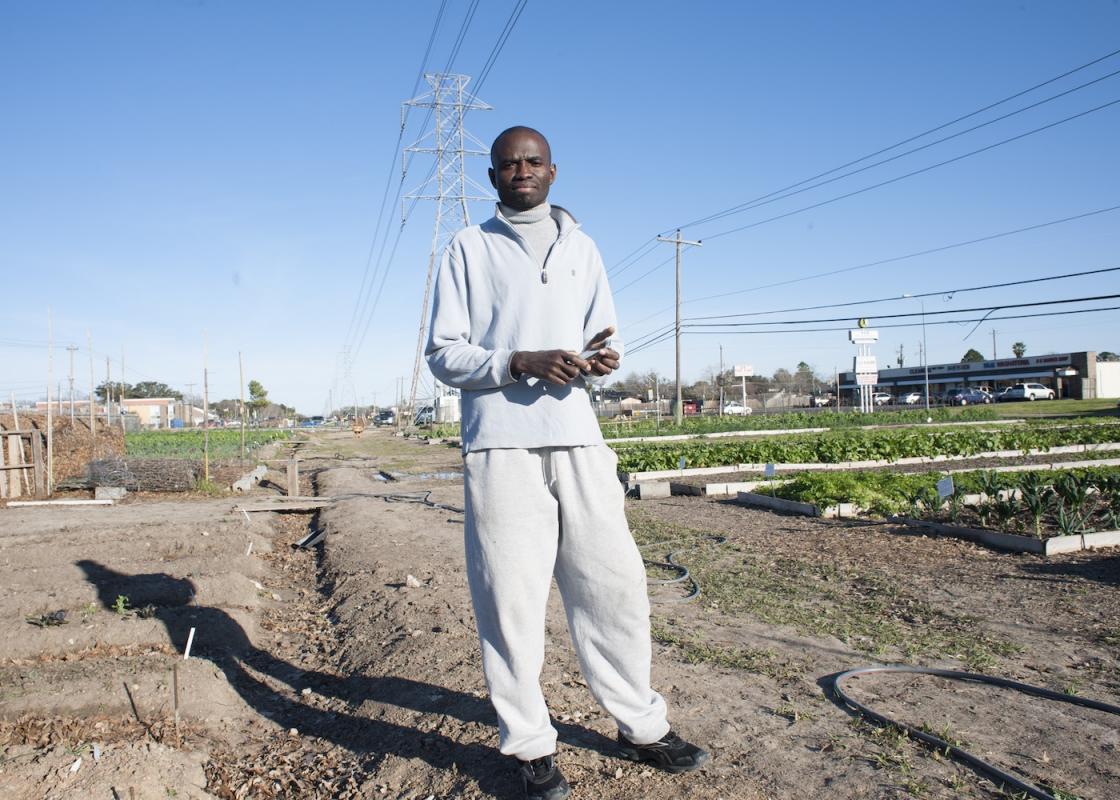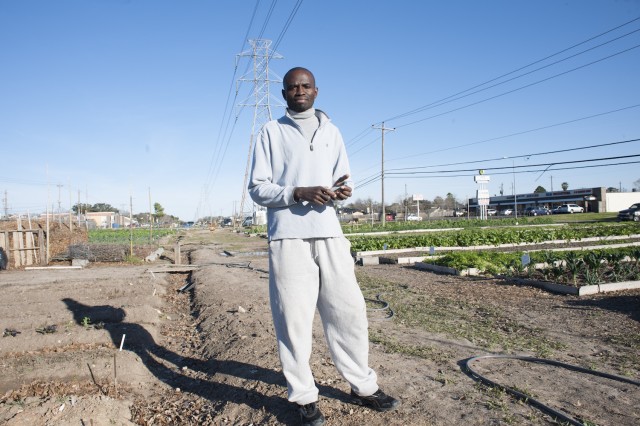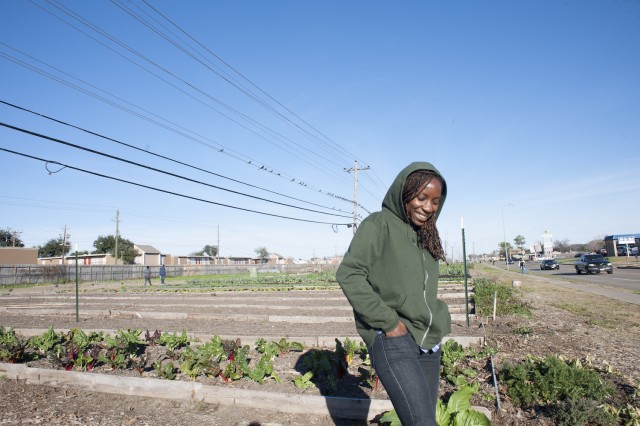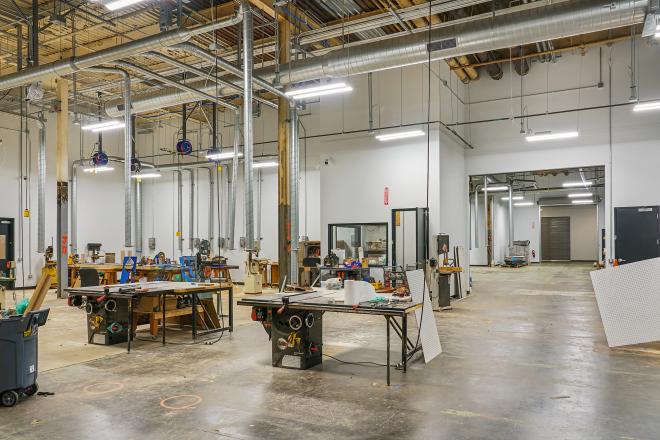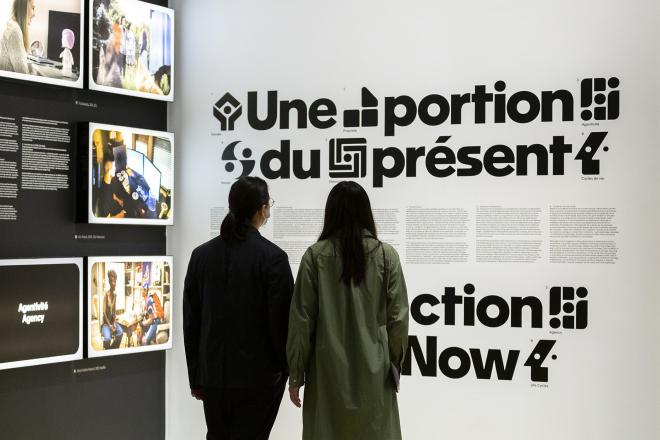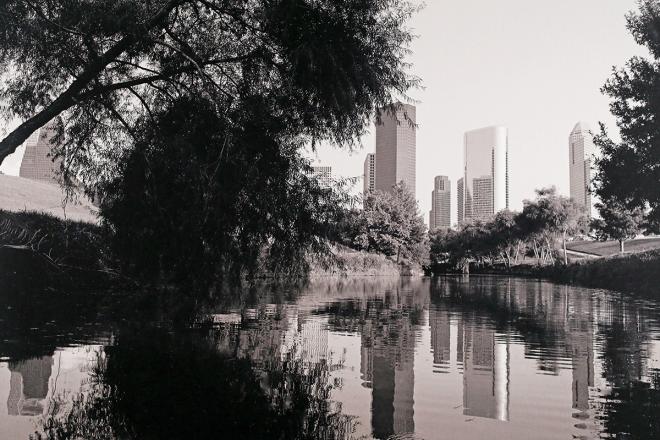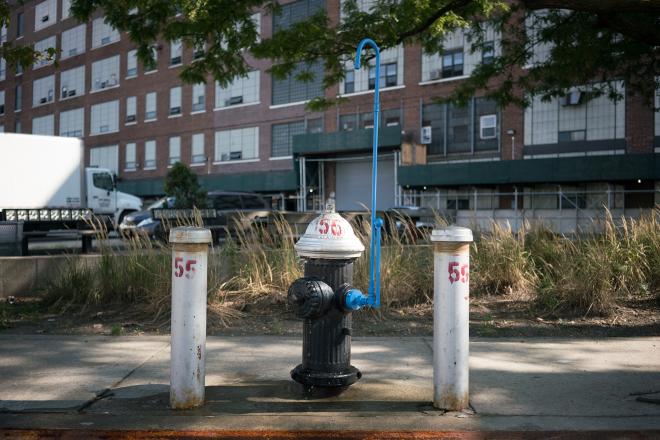If this topic interests you, buy the new issue of Cite, "The Beautiful Periphery." The issue is available for purchase at Brazos Bookstore and River Oaks Bookstore, as well as the bookstores at the Menil Collection; The Museum of Fine Arts, Houston; the Contemporary Arts Museum; and the Blaffer Art Museum. Read more from Cite 94.
“Our vision is a farm in every Houston neighborhood,” says Colleen O’Donnell, Sales Manager at Plant It Forward. “We are really trying to change the landscape of the city and how people get their food while providing opportunities for work to our refugee neighbors.” She describes a future in which you can send your kid down the street to pick up arugula for dinner, that you don't have to go to Whole Foods, that you can walk to a farm.
Plant It Forward launched in May 2012. Dr. Bob Randall, the visionary behind Urban Harvest, inspired the founders when he claimed that a person could make a living with an acre of land in Houston. Plant It Forward tested this idea by matching refugees who left behind farms in their home countries with land, tools, and knowledge of local conditions.
It turns out Dr. Randall was wrong. The farmers are able to earn a livelihood growing fresh food with less than an acre, according to O’Donnell. After a whirlwind two years, Plant It Forward has six farmers working at three Houston locations: Braeswood Church, Westbury Community Gardens, and University of St. Thomas. A fourth is in the works. The rapid growth of Plant It Forward was helped by two federal grants. The assimilation of refugees through social entrepreneurialism has enormous appeal. Donations from the Baxter Trust, the Houston Garden Club, and others, as well as sales to high-end restaurants, have proven crucial. Initial start up costs and continuous funding have been provided by a Bellaire software company, Bridgeway Software.
This vision of a farm in every neighborhood would be hard to take seriously were it not for the sight of what has already been accomplished. A photograph of the Braeswood Church farm was featured in the Beautiful Periphery issue of Cite (94). Between power line towers, Constant Ngouala pushes a wheelbarrow heaped with mulch down the utility right of way. As Assistant Farm Manager he has overseen the transformation of an easily overlooked piece of land into rows of green.
“When we first started with this concept, my first thought was we don't have much urban land,” says O’Donnell. “Then I saw it everywhere.”
As Albert Pope explains in his interview for Cite and republished on OffCite, the “spine-based” pattern of development in Houston leaves many gaps. Some later fill in and others remain gaps. He challenges Houstonians to engage the “primacy of space over form” rather than ignore or denigrate our landscape as suburban sprawl. Plant It Forward is literally seeding that change in conception.
Plant It Forward has partnered with churches to find those spaces. Braeswood Church had long ago secured surface rights to the land in the utility right of way adjacent to their place of worship. Ngouala and other farmers have created bounty from that underutilized land.
Placing such farms in every neighborhood is no romantic notion of a sharing economy and community farms but a sweaty, sun-baked undertaking powered by professional farmers who bring with them years of grit and experience. Still, the farms, which are not fenced off, catalyze a sense of community. People often pull over to speak with the farmers, volunteers, and staff.
“We have discovered people really respect the space,” O’Donnell says about the lack of fencing.
You can get in on the fresh produce through Plant It Forward’s Community Supported Agriculture (CSA). Shares sell fast.
More >>>
Read a remarkable long-form profile of the Plant It Forward farmers by Zachary Martin and published in Sugar & Rice.


